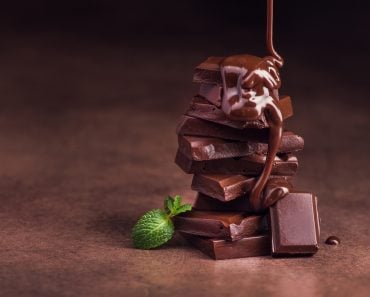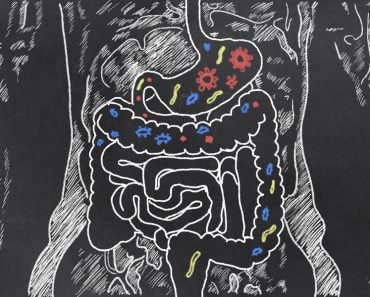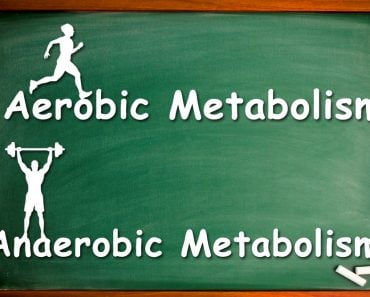Table of Contents (click to expand)
The fermentation of chocolate is a process that takes place under low oxygen or anaerobic conditions with the help of microbes. Without these microbes, your chocolate would not be brown, nor would it have its characteristic flavor and aroma.
Nothing is more irresistible than the rich taste and smooth texture of a well-crafted chocolate bar. But what most people who enjoy chocolate don’t realize is that this extraordinary treat is brought to you by the concerted efforts of some very special microbes.
Recommended Video for you:
Where Does Your Chocolate Come From?
The journey of chocolate begins with the Cacao tree, Theobroma cacao. These trees grow best in hot and humid regions, such as the West African countries of Ghana and the Ivory Coast, as well as Ecuador.
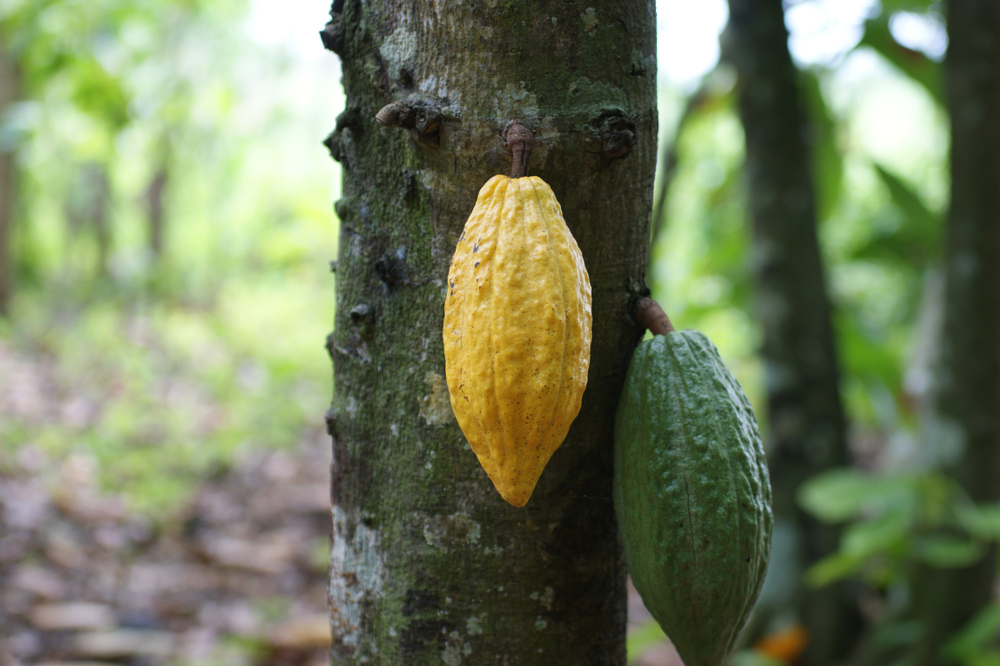
The ripe yellow papaya-looking fruit of the tree is the starting material of chocolate. Harvesters break the fruit pods to extract cacao beans covered with mucusy pulp, called the pulp-bean masses.
If you tried to convert these beans into chocolate, you would fail. Your chocolate would neither be brown nor have the “chocolate” flavor. To get to chocolate, the beans first need to be worked on by microbes, like yeasts and bacteria. This process, called fermentation, is the same one that gives us earthy wine, stinky cheese and tangy kombucha.
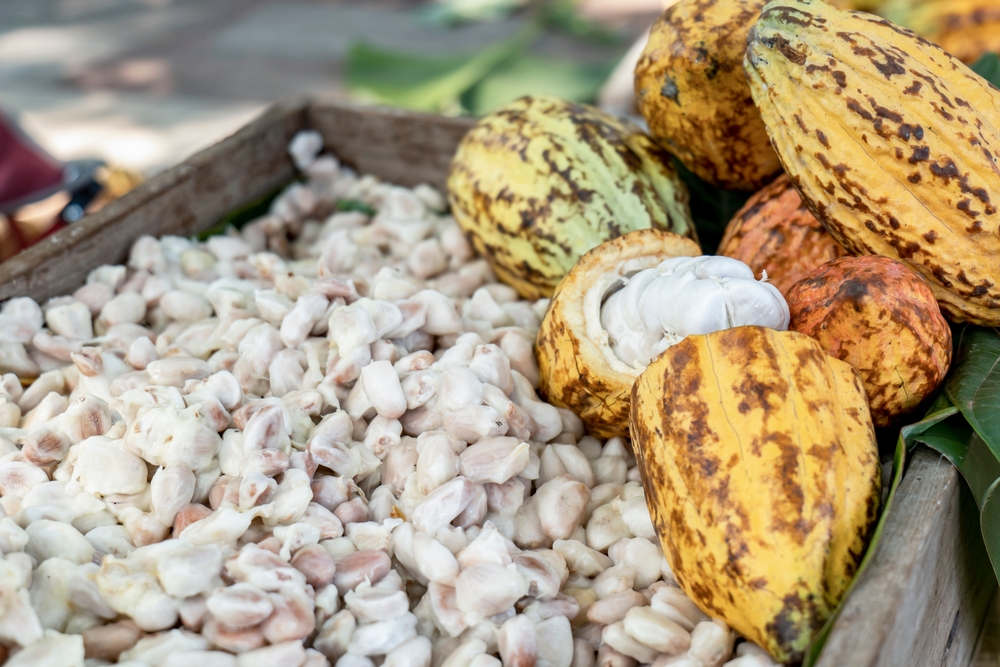
What Is Fermentation?
Fermentation is a metabolic process that takes place under either low oxygen or completely anaerobic conditions. Microbes, usually fungi like yeast and various bacteria, grow on a food stuff, altering the food’s composition by producing byproducts from their metabolism. Think of this process as a game of Telephone, where a message (a chemical) from one player (a microbe) gets modified and passed to another player (another microbe).
Generally, fermentation comes in two types, homo and hetero fermentation; they differ based on the variety of the products formed. Homo-fermentation involves forming one type of product, as in the case of buttermilk, where lactic acid is the major product formed by certain bacteria. In hetero-fermentation, on the other hand, several products like acids and alcohols are formed, which is what occurs in cacao fermentation.
Fermentation Of Chocolate
1. The Anaerobic Phase
Cocoa pulp-bean mass is stored in huge heaps and then covered with banana leaves, creating a low-oxygen environment. This enables appropriate growth conditions for beneficial microbes like yeast and Lactic Acid Bacteria (LAB).
Yeast from the genera Candida, Hanseniaspora, Pichia, and Saccharomyces are the opening act of fermentation. Under anaerobic conditions and at temperature ranges of 25-30℃, yeasts consume the carbohydrate-rich pulp of cocoa beans, converting them into glucose and fructose. The breakdown of glucose (glycolysis) makes pyruvate, which is then converted to ethanol, carbon dioxide and other flavor precursors like esters or higher alcohols.
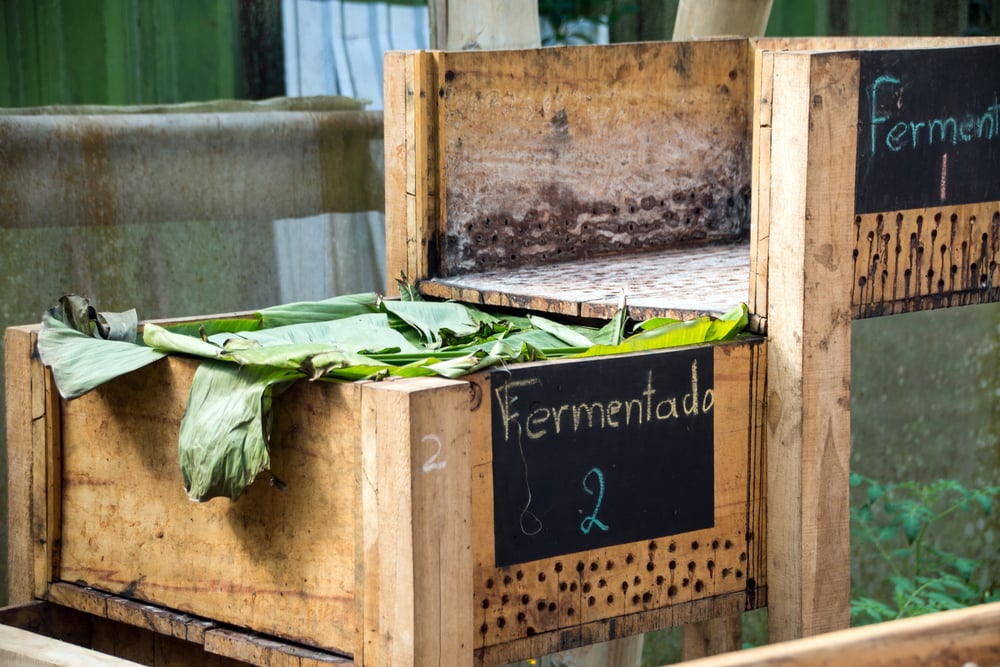
Under similar conditions, lactic acid bacteria, i.e., Lactobacillus, also use carbohydrates from the cacao pulp-bean mass, forming lactic acid as a major product. The reduction of pulp matter allows ethanol and lactic acid to penetrate the cacao beans, thus acidifying the interior of the beans and inhibiting their germination.
2. The Aerobic Phase
This usually starts 72-96 hours after the anaerobic phase. Partially fermented beans are turned and mixed periodically to increase aeration. That’s when the next set of players come into the picture: Acetic Acid Bacteria (AAB). AAB, for example Acetobacter, consume ethanol and lactic acid, which results in the production of acetic acid (Acetic acid fermentation).
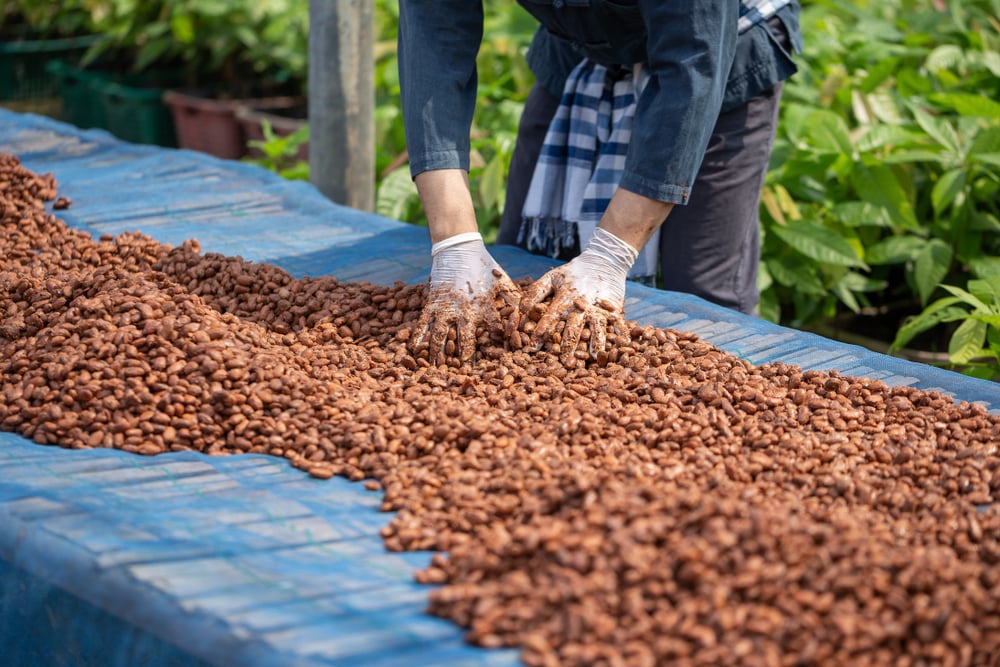
This reaction not only increases pH, but also the temperature of the fermenting mass to about 50°C or above. Due to this, proteins are further hydrolyzed and diffused into the interiors of cacao beans.
An interesting phenomena called a Maillard reaction takes place, wherein proteins and carbohydrates react under high temperatures; this is responsible for the dark brown color of the beans, as well as their characteristic flavor and aroma.
AAB also synthesizes different flavor-active compounds and enzymes, turning the bitterness of cacao beans to a slightly rich, nutty taste.
Eventually, due to increasing temperatures, these microbes decrease in number.
Over-fermentation of the beans may lead to the growth of microbes like bacilli or filamentous fungi that can spoil the beans.
Final Stage Of Preparing Chocolate
In order to make chocolate, cacao beans still need to undergo certain processes, like heating at high temperatures (roasting), separating the outer shell of beans (winnowing), grinding to decrease the grainy texture of fermented beans, conching (increasing texture and viscosity of the mixture) and molding to give them a desired structure.

A Final Word
So why is this microbial-assisted process so essential?
Researchers Van Thi Thuy Ho, Jian Zhao and Graham Fleet performed experiments to check the effect of the presence and absence of these microbes; it was observed that these microbes are essential to produce a consistent quality of chocolate. In one of the tests, natamycin was used to suppress the growth of yeast in cacao beans; this caused the beans to turn out purple with a sour (acidic) taste. Similar studies were also done to test the importance of LAB and AAB during cacao fermentation.
To conclude, it’s the presence and interplay of microbes that enhances chocolate’s overall flavor profile, without which it wouldn’t be nearly as delicious and addictive as the treats we have come to crave!
References (click to expand)
- De Vuyst, L., & Leroy, F. (2020, May 18). Functional role of yeasts, lactic acid bacteria and acetic acid bacteria in cocoa fermentation processes. FEMS Microbiology Reviews. Oxford University Press (OUP).
- Ho, V. T. T., Zhao, J., & Fleet, G. (2014, March). Yeasts are essential for cocoa bean fermentation. International Journal of Food Microbiology. Elsevier BV.
- Ho, V. T. T., Fleet, G. H., & Zhao, J. (2018, August). Unravelling the contribution of lactic acid bacteria and acetic acid bacteria to cocoa fermentation using inoculated organisms. International Journal of Food Microbiology. Elsevier BV.
- Ho, V. T. T., Zhao, J., & Fleet, G. (2015, July). The effect of lactic acid bacteria on cocoa bean fermentation. International Journal of Food Microbiology. Elsevier BV.
- Schwan, R. F., & Wheals, A. E. (2004, July). The Microbiology of Cocoa Fermentation and its Role in Chocolate Quality. Critical Reviews in Food Science and Nutrition. Informa UK Limited.
- Adams, M. R., & Moss, M. O. (2007, September 11). Food Microbiology. []. The Royal Society of Chemistry.

